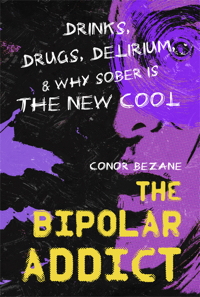 There are no brain scans, X-rays, or MRIs that can identify bipolar disorder or any other mood disorder. But pee? Yes, your urine might be able to help discern what mood disorder you may have.
There are no brain scans, X-rays, or MRIs that can identify bipolar disorder or any other mood disorder. But pee? Yes, your urine might be able to help discern what mood disorder you may have.
Differentiating between depression and bipolar disorder is a huge challenge for psychiatrists when presented with the first onset of symptoms. Most bipolar individuals initially seek help when they are experiencing depressive episodes.
I know that is what happened with me. I was working on a live television show leading up to the New Hampshire primary and experiencing major anxiety attacks and depression. When I went to my new psychiatrist immediately upon returning home in January, she diagnosed me with depression and prescribed Prozac.
As many of us with bipolar disorder know, an anti-depressant alone without a mood stabilizer can trigger mania. And that’s exactly what happened. It was a slow ramp-up, but by April, I was full-blown manic, complete with experiencing hallucinations.
But what if there were a way from the get-go to diagnose bipolar versus depression? Scientists in China have been working on a urinary test to distinguish between the two.
“The identified urinary biomarkers can aid in the future development of an objective laboratory-based diagnostic test for distinguishing [bipolar disorder] from [major depressive disorder] patients,” the study says.
The researchers examined the urine of those with bipolar disorder and a second set with major depressive disorder. They looked at metabolites, or substances related to metabolism, hoping to find some biological differences between the two sets of people.
With chemical analyses, they found that 20 discriminative metabolites were responsible for differentiating bipolar disorder from major depressive disorder.
So what’s the skinny?
This is just one study, and more research is needed for a conclusive test to be used by doctors. Meanwhile, keep on peein’ on. The test may be just around the corner.







